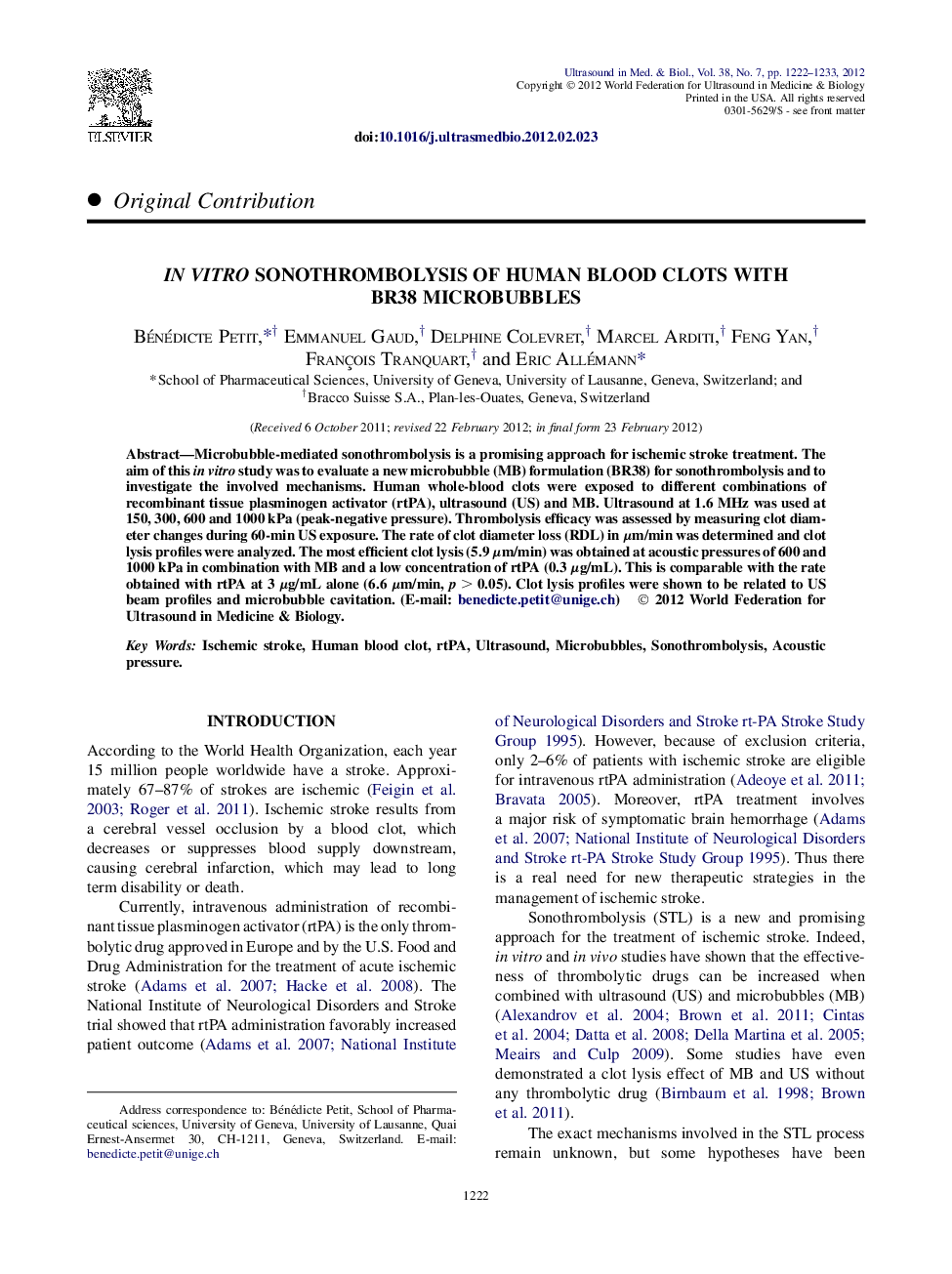| Article ID | Journal | Published Year | Pages | File Type |
|---|---|---|---|---|
| 10692152 | Ultrasound in Medicine & Biology | 2012 | 12 Pages |
Abstract
Microbubble-mediated sonothrombolysis is a promising approach for ischemic stroke treatment. The aim of this in vitro study was to evaluate a new microbubble (MB) formulation (BR38) for sonothrombolysis and to investigate the involved mechanisms. Human whole-blood clots were exposed to different combinations of recombinant tissue plasminogen activator (rtPA), ultrasound (US) and MB. Ultrasound at 1.6 MHz was used at 150, 300, 600 and 1000 kPa (peak-negative pressure). Thrombolysis efficacy was assessed by measuring clot diameter changes during 60-min US exposure. The rate of clot diameter loss (RDL) in μm/min was determined and clot lysis profiles were analyzed. The most efficient clot lysis (5.9 μm/min) was obtained at acoustic pressures of 600 and 1000 kPa in combination with MB and a low concentration of rtPA (0.3 μg/mL). This is comparable with the rate obtained with rtPA at 3 μg/mL alone (6.6 μm/min, p > 0.05). Clot lysis profiles were shown to be related to US beam profiles and microbubble cavitation.
Related Topics
Physical Sciences and Engineering
Physics and Astronomy
Acoustics and Ultrasonics
Authors
Bénédicte Petit, Emmanuel Gaud, Delphine Colevret, Marcel Arditi, Feng Yan, François Tranquart, Eric Allémann,
